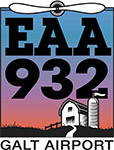A VFR flight plan is a form you send to the FAA with a record of your planned flight, including details such as your destination and route. The sole purpose of this procedure is so that they can initiate search and rescue services if something happens to you en route.
VFR flight plans are filed with the FAA’s Flight Service (FSS) organization, which provides services to pilots through a contract service provider, Leidos. You will need to create a free account at https://1800WXBRIEF.com in order to receive this service.
For VFR flights within the continental US, filing a flight plan is optional. However, if you are flying to an international destination, such as Canada, an active VFR or IFR flight plan is mandatory.
There are three steps to the VFR flight plan process.
Step 1. “File” your flight plan. There are numerous options to file. You can call 1-800-WX-BRIEF, file your flight plan online at https://www.1800WXBRIEF.com, file directly from your electronic flight bag (EFB) app, such as ForeFlight, or through other flight planning software such as SkyVector. Your flight plan will remain in the system for about two hours after your proposed departure time, and if you do nothing else it will simply disappear.
Step 2. In order to receive search and rescue services you must “Activate” your flight plan as soon as practical after your departure. This can be done in various ways. First, you can call 1-800-WX-BRIEF on the ground when you are ready to depart. Second, you can radio FSS in the air soon after your departure (you can find the appropriate frequency in the Chart Supplement). Another option is to activate it using your EFB. And lastly, if you filed online you will receive a link via email to open your flight plan using the Leidos EasyActivate service. All you have to do is click on the link and the flight plan is activated.
Step 3. “Close” your flight plan on the ground after you land by calling 1-800-WX-BRIEF, via your EFB or using the Leidos, EasyClose service (another email link). You must close your flight plan within 30 minutes after your estimated time of arrival otherwise search and rescue services will be activated. Note that flight plans are never closed automatically and you cannot ask ATC to close your flight plan.
You may also cancel or amend your flight plan in the air at any time by calling the appropriate FSS frequency on the radio or using your EFB. If you divert to a different airport, change your route, or take extra time en route, remember to amend your flight plan with FSS so they don’t initiate a search unnecessarily.
It is important to note that Flight Service is not an air traffic control (ATC) facility and they don’t track you on radar or provide any other services while you are en-route. If you want radar services you must initiate VFR flight following with ATC.
What are the advantages of filing a flight plan? The only service provided through this process is search and rescue, and that is only triggered 30 minutes after your estimated time of arrival if you have not either closed or cancelled your flight plan. If you are missing, Flight Service will initiate a search along your proposed route of flight. This service may be used for any flight but it is highly recommended for flying over remote areas.
Beth Rehm, CFII

